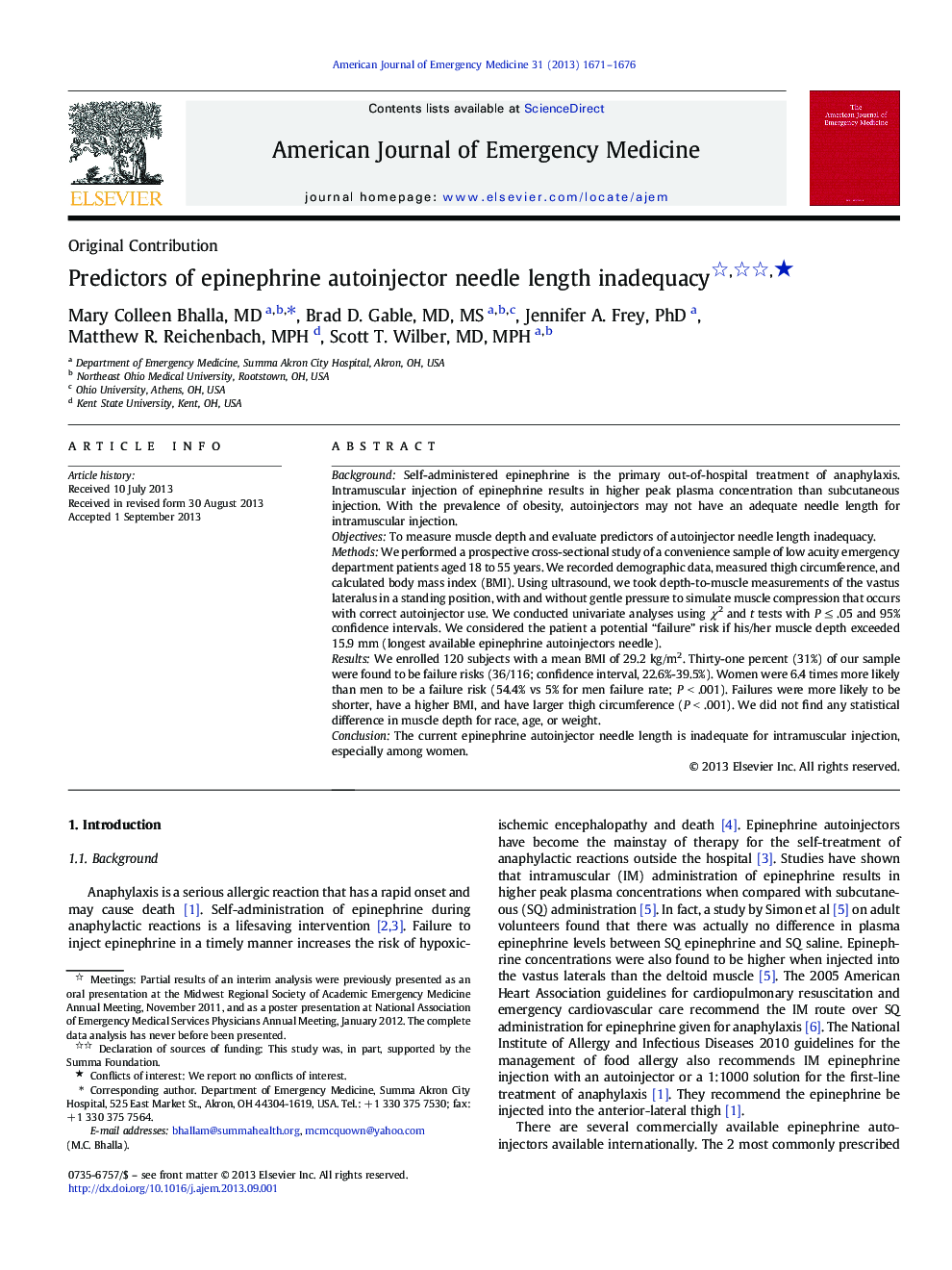| کد مقاله | کد نشریه | سال انتشار | مقاله انگلیسی | نسخه تمام متن |
|---|---|---|---|---|
| 3224840 | 1588123 | 2013 | 6 صفحه PDF | دانلود رایگان |

BackgroundSelf-administered epinephrine is the primary out-of-hospital treatment of anaphylaxis. Intramuscular injection of epinephrine results in higher peak plasma concentration than subcutaneous injection. With the prevalence of obesity, autoinjectors may not have an adequate needle length for intramuscular injection.ObjectivesTo measure muscle depth and evaluate predictors of autoinjector needle length inadequacy.MethodsWe performed a prospective cross-sectional study of a convenience sample of low acuity emergency department patients aged 18 to 55 years. We recorded demographic data, measured thigh circumference, and calculated body mass index (BMI). Using ultrasound, we took depth-to-muscle measurements of the vastus lateralus in a standing position, with and without gentle pressure to simulate muscle compression that occurs with correct autoinjector use. We conducted univariate analyses using χ2 and t tests with P ≤ .05 and 95% confidence intervals. We considered the patient a potential “failure” risk if his/her muscle depth exceeded 15.9 mm (longest available epinephrine autoinjectors needle).ResultsWe enrolled 120 subjects with a mean BMI of 29.2 kg/m2. Thirty-one percent (31%) of our sample were found to be failure risks (36/116; confidence interval, 22.6%-39.5%). Women were 6.4 times more likely than men to be a failure risk (54.4% vs 5% for men failure rate; P < .001). Failures were more likely to be shorter, have a higher BMI, and have larger thigh circumference (P < .001). We did not find any statistical difference in muscle depth for race, age, or weight.ConclusionThe current epinephrine autoinjector needle length is inadequate for intramuscular injection, especially among women.
Journal: The American Journal of Emergency Medicine - Volume 31, Issue 12, December 2013, Pages 1671–1676